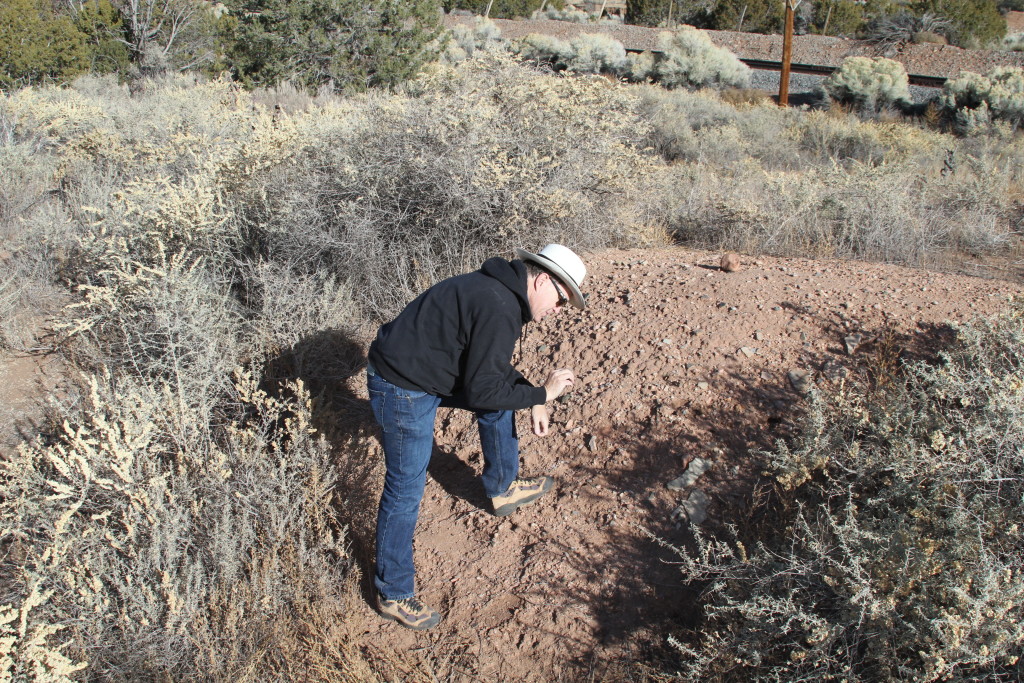Manzanares Pueblo, located near the village of Lamy, Santa Fe County, New Mexico, is a complex of adobe and masonry structures situated in the foothills of the Sangre de Cristo Mountains in the Galisteo Basin. The site extends over two five-acre residential lots and was occupied during the Pueblo III Coalition period (A.D. 1200-1325). Built around a central plaza, the main architectural unit was two stories high and may have had as many as 250 rooms. West of the large roomblock is a series of smaller architectural units that, with the main unit, forms a complex community center. Some of the rooms contained prepared flagstone floors and painted or whitewashed plaster. Floor features such as hearths and ash pits are also present. The ceramic assemblage includes large numbers of Galisteo and Santa Fe black-on-white pottery types.
Manzanares Pueblo was first mapped and excavated in 1915 by Nels C. Nelson of the American Museum of Natural History in New York while he was testing several sites in the Lamy area. He excavated approximately 17 test units in the structures. Santa Fe archaeologist W.S. Stallings collected tree-ring samples from the site in 1933, although the provenience of the samples in unclear. Published dates provide a cluster of cutting dates at A.D. 1295.
In the 1970s, an extensive tract of land that included Manzanares Pueblo was slated for development. Santa Fe archaeologist Charlie Steen agreed to conduct excavations prior to development. He excavated 27 rooms in the largest roomblock and portions of 6 more rooms and completed additional testing in the plaza area. The development company at one point considered converting the property to an “archaeological park,” but instead sold the property to private owners, splitting Manzanares Pueblo into two 5-acre residential lots.
The greater Galisteo Basin of the northern Rio Grande Valley in north-central New Mexico preserves some of the nation’s most dramatic and highly significant cultural resources and landscapes relating to pre-contact through post-contact periods. More than 3,000 archaeological sites and some 160 historic structures have been recorded in the Galisteo Basin, representing only a fraction of the cultural resources likely to be present. These sites hold important information about Ancestral Puebloan origins, migration, demography, changing land use, subsistence strategies, alliances and possible conflict, the florescence of the Classic period, and worldview and changing ceremonial practices in the greater Galisteo Basin.
In recognition of the unique cultural qualities and great significance of the area, the United States Congress passed the Galisteo Basin Archaeological Sites Protection Act in 2004, calling for the preservation of 25 significant archaeological sites in the greater Galisteo Basin and calling for the identification and preservation of additional significant sites in the area.
The Archaeological Conservancy was instrumental in assisting state and federal agencies in establishing the act. Six of the sites in the act are partially or totally owned by the Conservancy. The acquisition of Manzanares Pueblo will represent our seventh property in the Basin. The remaining protected sites designated in the act are owned by Bureau of Land Management, State of New Mexico, Santa Fe County, and individual private landowners, ranchers, and developers.









